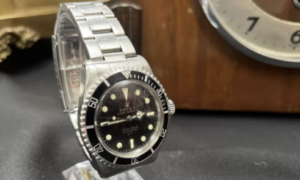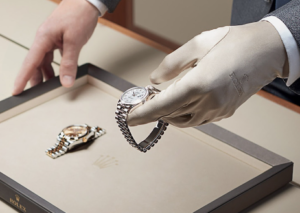The Birth of Timekeeping:
The earliest form of timekeeping can be traced back to ancient civilizations. Sundials, using the position of the sun to indicate the time, were among the first tools used by humans to measure the passage of time. These primitive devices laid the foundation for more sophisticated timekeeping methods that would emerge in the centuries to come.
Mechanical Marvels: From Pocket Watches to Wristwatches:
The 16th century witnessed a significant breakthrough in timekeeping with the invention of mechanical clocks and pocket watches. These timepieces relied on intricate mechanical movements, often powered by springs or weights, to track time accurately. As technology advanced, the design and functionality of these swiss replica watches improved, eventually leading to the popularization of wristwatches in the early 20th century.
Quartz Revolution:
The development of quartz watches in the 1960s brought a revolution in timekeeping. Quartz crystals, known for their remarkable accuracy, replaced the mechanical components, resulting in watches that were more precise and affordable. This breakthrough technology paved the way for the mass production of watches and marked a turning point in the industry.
The Rise of Digital Watches:
In the 1970s, digital watches burst onto the scene, further transforming the landscape of timekeeping. These watches featured LED or LCD displays, allowing for easy readability and a host of additional functionalities such as chronographs, alarms, and calendars. Digital watches gained popularity for their practicality and futuristic appeal.
The Renaissance of Mechanical Watches:
While quartz and digital watches dominated the market for some time, the late 20th century witnessed a resurgence of interest in mechanical watches. Collectors and enthusiasts began to appreciate the artistry, craftsmanship, and intricate movements of mechanical timepieces. Luxury brands revived the tradition of watchmaking, producing exquisite mechanical watches that appealed to a discerning clientele.
Technological Advancements: Smartwatches:
The 21st century brought about the advent of smartwatches, combining traditional timekeeping with advanced digital capabilities. Smartwatches can connect to smartphones, providing users with notifications, fitness tracking, music control, and a host of other features. These watches have become increasingly sophisticated, with improved displays, longer battery life, and enhanced connectivity options.
Innovation in Materials and Design:
Alongside technological advancements, the world of cheap rolex replica has witnessed significant innovation in materials and design. High-tech materials such as ceramic, titanium, and carbon fiber are now commonly used, offering improved durability and aesthetics. Designs have become more diverse, catering to a wide range of styles and preferences.
Embracing Sustainability:
As environmental awareness grows, the watch industry has also embraced sustainability. Brands are incorporating sustainable practices into their manufacturing processes, using recycled materials, and focusing on energy-efficient movements. Additionally, the market for vintage and pre-owned watches has gained popularity, promoting the reuse and appreciation of existing timepieces.
Conclusion:
The development of the world watch has been a remarkable journey, from the ancient sundials to the innovative smartwatches of today. Through centuries of progress, we have witnessed the fusion of art, technology, and craftsmanship, resulting in a diverse range of timepieces to suit every taste and lifestyle. From the mechanical marvels to the quartz revolution and the rise of smartwatches, the world of watches continues to evolve, capturing our imagination.